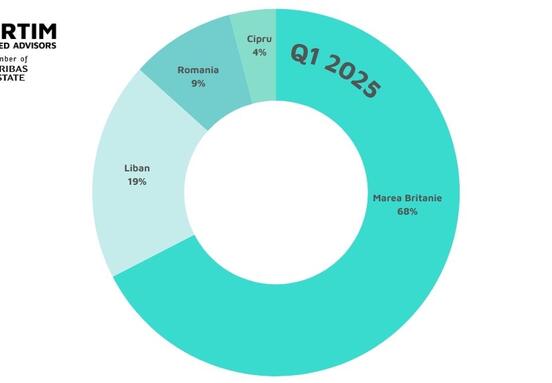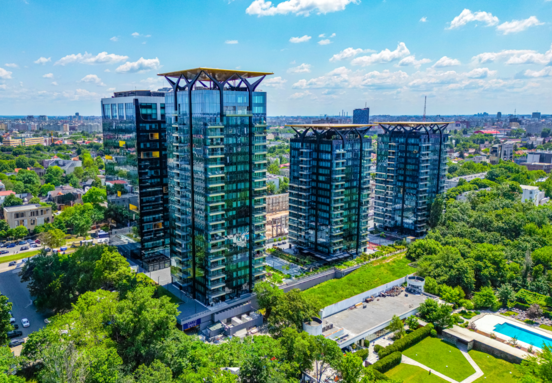Cluj-Napoca remains the most expensive city in the country, according to Colliers consultants, where the purchase of a new standard apartment costs the equivalent of an average salary earned in 12.5 years of work. Bucharest residents need 8.4 years’ wages for such an acquisition, Timisoara residents have to work 8.1 years for a new home, while Iasi residents have the lowest ratio compared to the big cities, of 7.7 years of work for a new home.
In Bucharest, Timisoara and Iasi, the most affordable prices for new housing were recorded at the end of 2020 – beginning of 2021, after which the evolution went on a strong upward trend, according to Colliers data. However, Cluj-Napoca has seen a particular evolution, with new housing becoming increasingly unaffordable over the last 8 years. Specifically, at the beginning of 2014, the most affordable residential properties among the big cities were in Cluj-Napoca, with the average buyer needing 9.2 years of salary to purchase a new home, while Bucharest and Timisoara required 10.4 and, respectively, 10.7 years of salaries, while Iasi required 11.4 for a resident to cover the amount paid for such an acquisition.
“When looking for a new home, we always start from the home we want and end up with the home we can afford. The congruence of these two criteria is getting smaller and smaller, and we expect the declining trend to continue. While the inflation index has reached 13.8% and will remain at double-digit levels for at least another 12 months, construction material prices have seen a much faster rise. Thus, the price of new housing, which incorporates these developments, will increase even more”, explains Gabriel Blăniță, Associate Director Valuation & Advisory Services at Colliers Romania.
The figures are not meant to show how long it would take one to buy an apartment, Colliers consultants point out, but rather to show if there is a discrepancy between purchasing power and prices. So, an affordability index of 8 years or more can be a worrying factor in the investment decision, they point out, especially if there are other financial commitments (leasing, personal loans, etc.) or if there are no other alternative sources of income besides the salary.
For example, in 2008, the affordability index in Bucharest was 25 years, and buyers who got loans at the limit of their possibilities to buy a home in an overheated market, at a rising cost of financing, in a currency that appreciated significantly against the leu, suffered the most. Even if at the moment the fundamentals do not suggest that we are in a real estate bubble, although the city of Cluj-Napoca shows signs of overheating, there is a risk of heading there in the medium term, Colliers consultants note. As we see increasing volatility in price drivers, there is a risk of accelerating developments in housing affordability, and all these imbalances will sooner or later be corrected.
“Although in 2022 we are not seeing the same combination of factors as in 2007-2008, it is important to urge responsibility in order not to repeat past mistakes. In times of uncertainty generated by inflation, the cost of financing, war or economic context, it is important to keep a reasonable margin of flexibility. On the other hand, given that the ideal housing we want is becoming more and more difficult to buy, we are seeing a growing interest in rents. Currently, the rental yield for an apartment in the central area of the big cities is about 5%, while the interest rate on a real estate loan exceeds this level. When the difference between rent and rate will be significantly in favor of rent, we will see even more residential developments intended exclusively for rent”, concludes Gabriel Blăniță.
In total, 71,420 new homes were delivered nationwide last year, 5% up compared to the previous year. As the total area authorized by developers in 2021 has increased by over 15% compared to 2020, to over 12 million square meters, the residential sector is moving towards new delivery highs this year.Recent indications from the demand side also suggest that there should be no problem with these areas being absorbed, with private sector wage increases returning to the double-digit area (even if they were slightly below the 13.8% inflation rate from April).At the same time, the volume of new mortgages was 30% higher in the first quarter and reached new all-time highs.
The central bank’s interest rate hikes, which are far from over, and a possible weakening of the labor market in the future, are moving in the opposite direction. Another sign of concern is the gap in the transmission of the monetary policy interest rate through the IRCC, used to grant new loans and currently at a level of 1.86%, while the ROBOR index to which most loans are linked is 4.68%. This gap exposes new lenders to a significant interest rate risk, which will materialize in the coming quarters.







